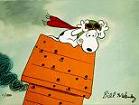Alfred
Posts: 6685
Joined: 9/28/2006
Status: offline

|
LoBaron,
I like the idea that you have realised the huge lacuna in the WITP:AE engine of the absence of factoring in crew numbers. However I cannot support your particular "solution" for these reasons.
(1) Crew affects all aircraft types. If implemented only for Allied 4E, why not for 2E. The A-20 series had a much smaller crew requirement than the B-25s and that was one significant reason why they remained in production. Looking at the game stats, not too many players would see the A-20 as being competitive with the B-25. The need to incorporate crew numbers would also greatly impact on the current attractiveness of Japanese planes. So where would you draw the line?
(2) There is a much more pervasive lacuna in the game engine which your proposal does not address and therefore fundamentally does not solve anything. Money! The true cost of any item is simply not captured by the game engine (a feature captured by most engines). Sure there is a rudimentary cost structure imposed, more obvious on the Japanese side with the "cost" of Heavy Industry expenditure, but also the consumption of supply for both sides in conducting operations, but this is only a very simplistic solution. Again if you look at the game stats, you would have to wonder why the B-25 was produced in such numbers and not the B-26. Yes I know that it reflects the actual historical record of both plane types in the PTO but the real reason why that occurred was that the per unit $US cost to the Treasury of the B-25 was considerably less than the B-26. The only real reason why the P-40 remained in production up to late 1944, well after better planes had entered production, was that it was cheap. Once you attempt to factor monetary cost in a semi realistic manner then you run into problems of taxation, home population morale/productivity, capital pricing models, inflationary modeling etc - clearly far beyond what the game engine is capable of and most unlikely to be greeted with any enthusiasm by players who already are daunted by the micromanagement in the game.
(3) To penalise pilot experience as a result of plane damage strikes me as being quite counterintuitive. It is just as valid to increase pilot experience (as currently happens now) to account for lessons learned in flying the mission. Also it imposes a hidden penalty on the better aircraft designs which incorporate armour, better defensive layout of guns etc, factors which are currently captured by the durability and armour ratings. Again, as per point 1 above, why limit this to Allied 4E, why not 2E and Japanese planes?
(4) An unintended byproduct of your proposal would be the value of flak. Why should damage from flak not be treated similarly to that from A2A?
Now if I might be allowed to try to be constructive rather than negative, I would much prefer, within the context of the existing game engine, to tweak the consumption of supply to address the problem. Currently strike missions by level bombers consume supply on the basis of their assigned load carrying capacity. Why not increase supply consumption for all strike missions (both Allied and Japanese) to be the current supply cost x number of engines. Thus, to give a theoretical example, a 4E plane rated at 4000 lb bomb load would consume double the supplies as a 2E plane with the same bomb load, and four times as much as a single engine plane with the same bomb load.
Alfred
|
 Printable Version
Printable Version

















 as I am just a humble user. The point has been made elsewhere that after 1944 the allies could pretty make any place they wanted a level 10 base so any modifications would seem fair. I think you have to bump all of the Mariana's. The largest B-29 raids of the war were in July 45 and they had about 750 bombers. And I think there were only 2 of those should that should be the absolute max.
as I am just a humble user. The point has been made elsewhere that after 1944 the allies could pretty make any place they wanted a level 10 base so any modifications would seem fair. I think you have to bump all of the Mariana's. The largest B-29 raids of the war were in July 45 and they had about 750 bombers. And I think there were only 2 of those should that should be the absolute max.



 New Messages
New Messages No New Messages
No New Messages Hot Topic w/ New Messages
Hot Topic w/ New Messages Hot Topic w/o New Messages
Hot Topic w/o New Messages Locked w/ New Messages
Locked w/ New Messages Locked w/o New Messages
Locked w/o New Messages Post New Thread
Post New Thread